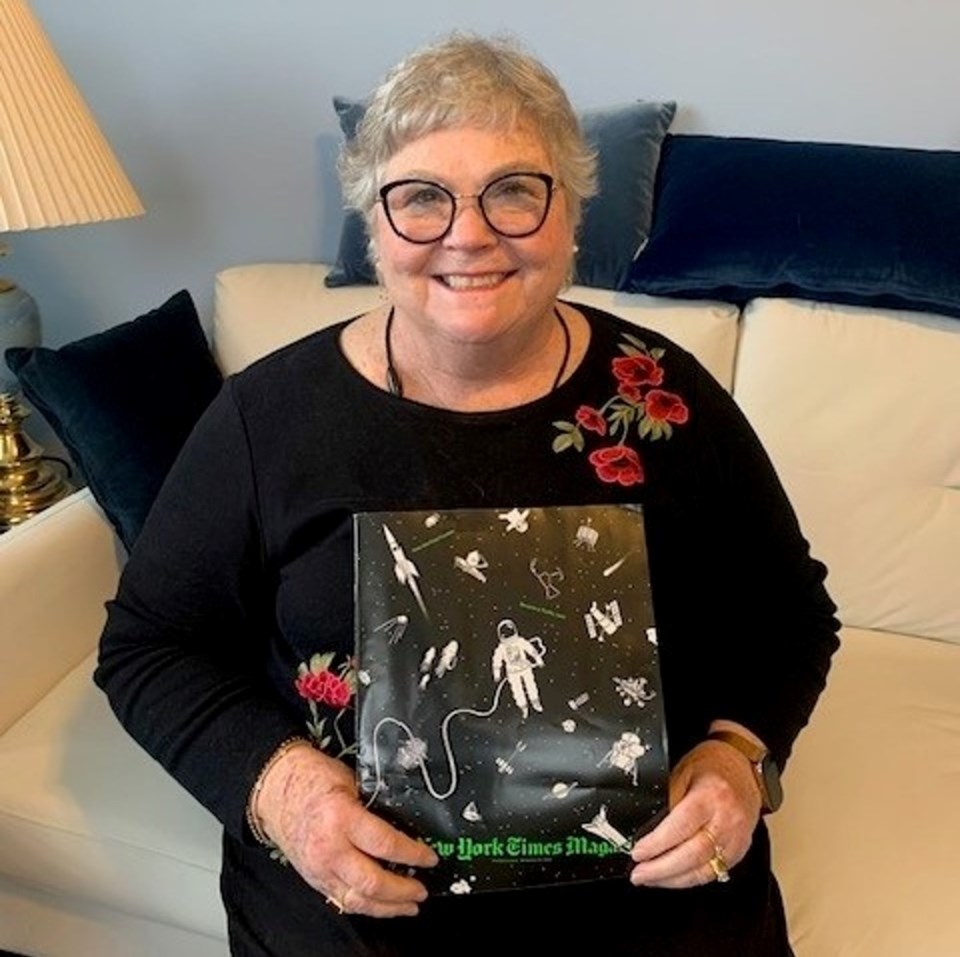Newmarket resident Kathleen Mansfield has long had a fascination with the stars and science fiction.
The Roxborough Retirement Residence resident is a self-professed “science nerd,” who grew up enjoying Star Trek. She said the idea of a wide open space frontier appealed to her, and the idea of other life out there in space seems possible.
That is what helped motivate her to send her DNA out into the stars as part of humanity’s first repository of DNA sent to deep space.
“I love it,” she said, knowing that her DNA is out there. “We know now that we are learning so much about our ancient history from the DNA of beings whom we’re still digging up … To me if there’s any knowledge to be gained by other civilizations, if they’re out there, if they find it — there are so many ifs —I like the idea.”
American company Celestis launched as part of a NASA rocket journey earlier this month. Although a lunar lander from Celestis did not reach its final destination, a spacecraft filled with DNA and cremated remains was successfully launched into deep space. The mission, titled the Enterprise, contained DNA of Star Trek creator Gene Roddenberry, DNA of three U.S. presidents, along with individuals like Mansfield who opted to buy in to have their DNA or remains be part of the voyage.
The spacecraft will establish a solar orbit and will be the first outpost for humanity in deep space.
“Once its stable orbit has been established, the Enterprise Flight will be renamed Enterprise station and will be the first imprint of humanity — with its DNA, data and memorial flights — to go beyond the Earth-Moon system, becoming part of the deeper cosmos,” the company said on its website. “Moreover, it will serve as a beacon to “others” — a representation of Earth, its customs, and its culture to possible lifeforms that may exist in our galaxy.”
Mansfield, a pharmacist before retirement, said the concept of life in the stars works for her.
“I'm a very logical, science-based, evidence-based thinker, and to me, this doesn’t seem out of the realm of possibility. That we’re not here alone,” she said.
DNA will not be the only thing Mansfield sends to space. With Celestis planning more flights — utilizing space available on NASA mission rockets — Mansfield intends to have a small amount of her cremated remains sent when she passes.
Being part of this does cost money. On its website, the company lists that being part of lunar or deep space flights starts at approximately. $13,000 US.
But Mansfield said her family has supported the idea.
"Knowing me and how much I have always loved this genre (science fiction), I don’t think it was a big step for any of them to think, ‘that’s she what’s gonna do,’” she said. “I just figure, well, I’ll spend my final dollars doing it that way.”
New York Times Magazine featured Mansfield in a story about the Celestis missions.
Although people who know her have reacted positively, Mansfield said, many of the comments on the article were negative.
“People were calling all of us who were featured narcissists, more money than we know what to do with, and we’re wasting resources, not realizing these (rockets) are already going up,” she said.
To those skeptical about the idea, she said it is ultimately a personal decision.
“All of us have the option to choose our final resting place, how many dollars we want to spend getting there and what appeals to us individually,” Mansfield said. “To each their own, really.”



